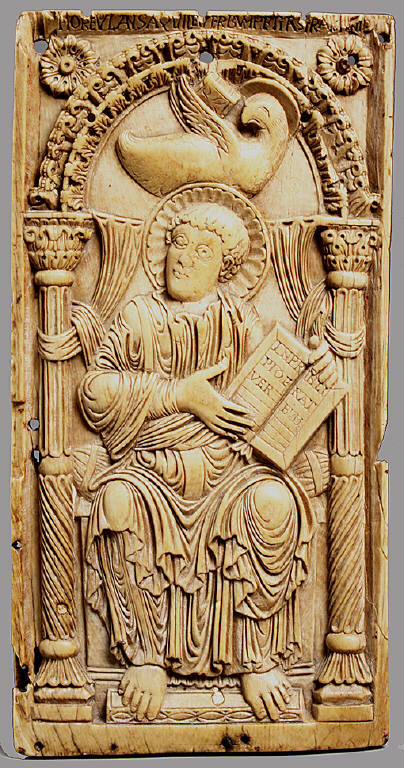Until 1977, when it appeared at a London auction, this ivory from the Carolingian "Renaissance" was unknown. Carved in high relief, the frontally enthroned Evangelist displays his Gospel with the opening phrase IN PRINCI / PIO ERAT / VERBVM ("In the beginning was the Word" [John 1:1]. The arch, with its rich acanthus decoration, is supported by elaborate columns and encloses John's symbol, the eagle, which is directly above him. The entire composition is framed by a simple inscribed border. The text of this inscription is based on a line from the "Carmen Paschale," a poem by the fifth-century Christian writer Sedulius.
Among the remarkable features of this ivory are John's loose, classical pallium and mantle, whose calligraphic treatment and plasticity verge on pure fantasy. This tendency toward a sumptuous ornamental effect, in which the abundant drapery patterns and textures take on a life of their own, becomes a characteristic of several ivories of the Court School of Charlemagne (r. 768-814).
Artistically, these ivories are very close to the manuscripts produced in Aachen for the court of Charlemagne; this resemblance suggests that they probably were carved there. Some scholars have maintained that some of these ivories may date into the reign of his successor, Louis the Pious (814-840).
Plaque with Saint John the Evangelist
